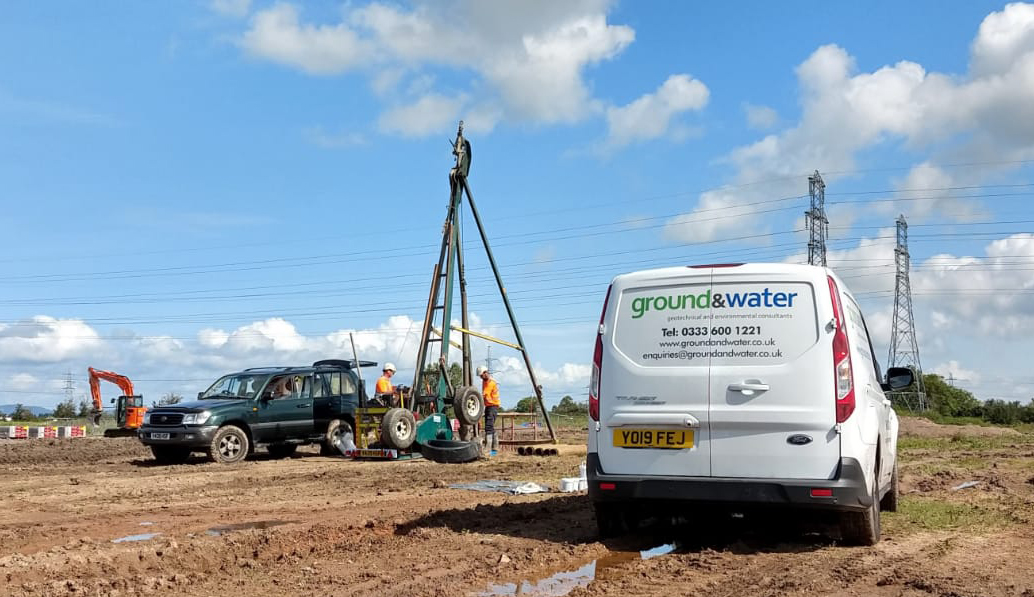Boring alongside the River Severn
by adsoxford | Nov 5th 2019

Boring alongside the River Severn
5th November 2019
Geoenvironmental • Geotechnical
A growing reputation for excellence sees Ground & Water venture to the west of England when called out to carry out geoenvironmental and geotechnical investigations on the banks of the Severn Estuary
Our Client
Ground & Water was commissioned by an independent project management company, providing end-to-end solutions for occupiers and developers.
Preliminary-Assessment
A review of the previous site investigation report revealed Made Ground, comprising a mixture of cohesive and granular deposits, to depths of between 1.40 – 2.10m bgl. BGS boreholes indicated the underling soft grey/brown silty clays, with some peat. Tidal Flat Deposits could have also been present to at least 16 – 20m bgl.
The previous investigation revealed limited contamination, with the exception of a “hotspot” of benzo(a)pyrene. A Polycyclic Aromatic Compound, it is normally produced by the incomplete combustion of coal or wood. Previous phases of remediation work comprised the removal of 80m3 of material from the hotspot. Loose chrysotile and amosite asbestos was also encountered in one additional location.
Our Challenge
Ground & Water was commissioned to review a phased contamination assessment and undertake a geotechnical investigation, to inform the design of foundations and areas of hardstanding, at a proposed industrial site near Avonmouth.
The site comprised undeveloped land, which had been subjected to land raising activities in 2010, to reduce the risk of flooding from the River Severn. It was known that the associated filling activities had been investigated for alleged waste offences. This raised the possibility that materials harmful to human health, could be encountered.
The Ground & Water Approach
An intrusive investigation was conducted, comprising Cable Percussion boreholes, Window Sampler boreholes and in-situ California Bearing Ratio tests, undertaken to assess the ground conditions with respect to the proposed development. The intention was to construct large expanses of concrete hardstanding for storage and loading.
Made Ground was noted to 1.10 – 1.80m bgl and comprised mainly dark brown/brown silty sandy gravelly clays, with the gravel comprising concrete, brick, clinker, glass and flints. Very loose to loose dark grey clayey sands and low to extremely low undrained shear strength sandy silty clays with peat bands, were then proved to 17.80 – 18.20m bgl. The weathered Mercia Mudstone Group was then proved. Fortunately, chemical laboratory analysis of the Made Ground revealed no elevated levels of contamination above “commercial” guidelines.
The Outcome
Based on the intrusive investigation and laboratory testing results, strategic partners were able to design ground improvement methodologies for the construction of areas of hardstanding and provide design parameters for driven piles, including indicated pile loads. The contamination risk assessment helped to define costs in relation to materials, management and provided ground-gas risk assessment for the development.
